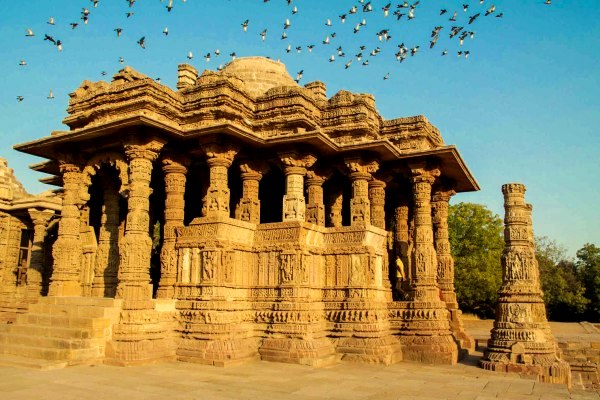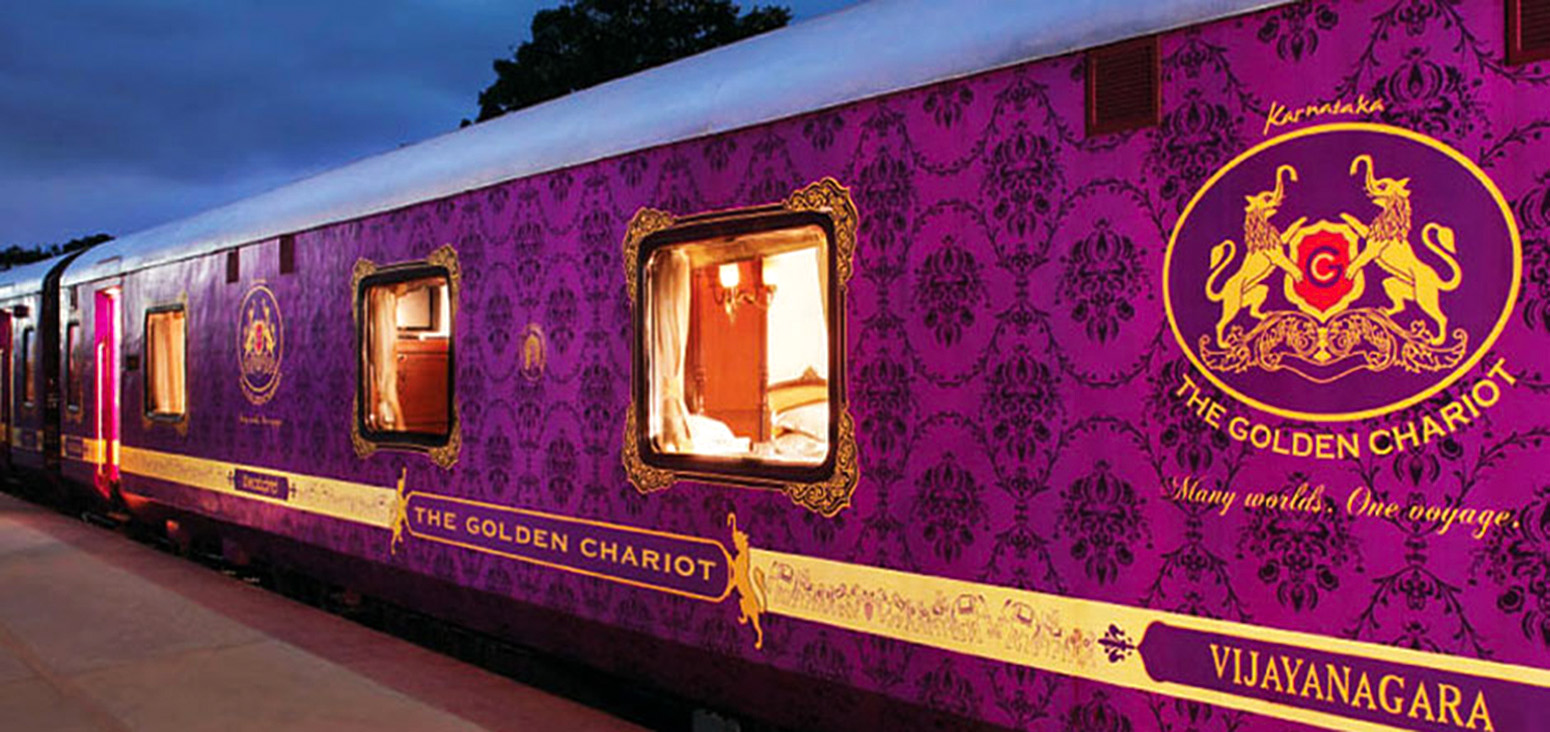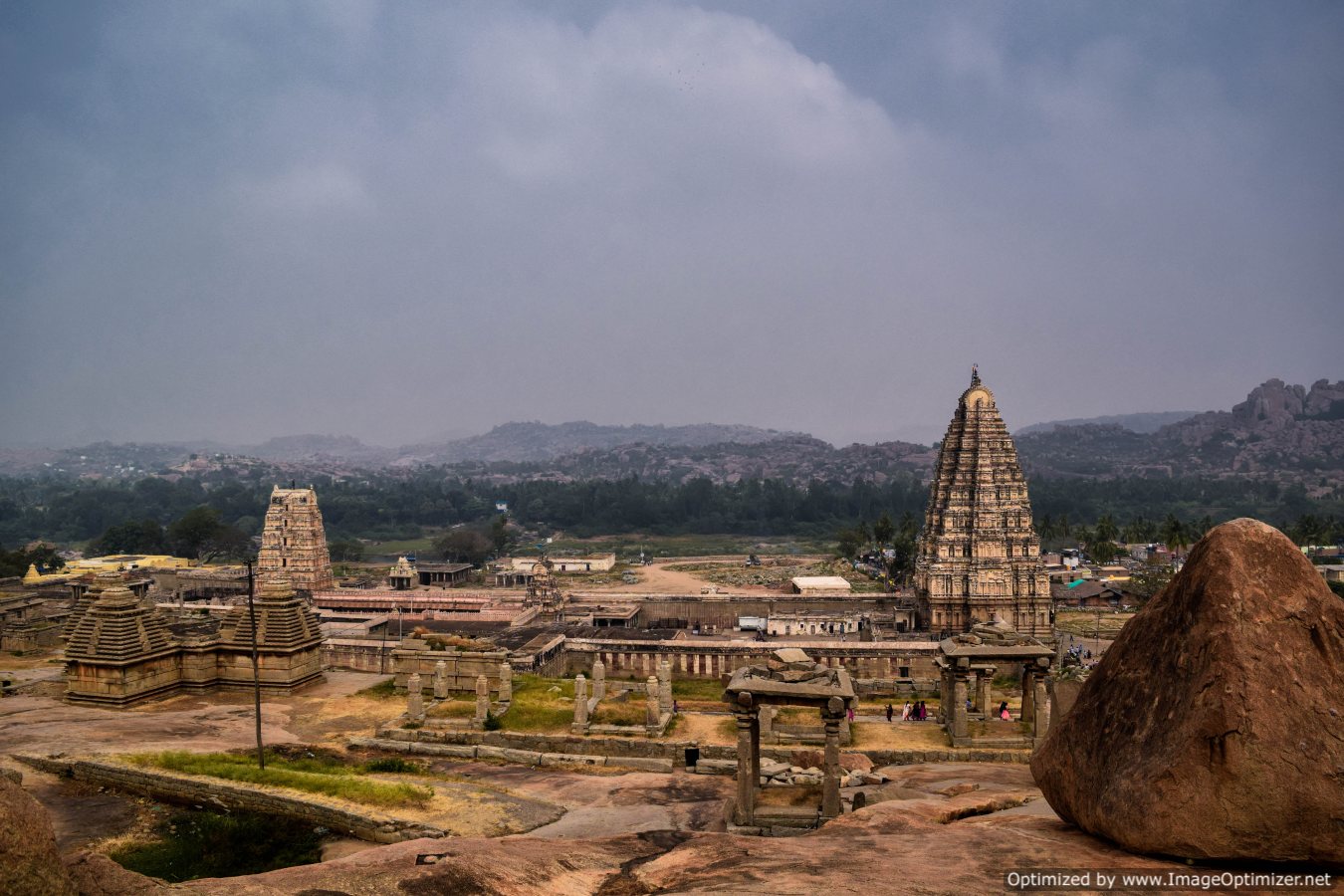A ride, of some 125 kms from Ahmedabad, leads you into the quaint town of Mehsana, famous for the magnificent Sun temple built by the great Solanki rulers to venerate Sun for its energy and vitality. This Sun Temple, very much like the Sun temple at Konark, Orissa and Martand, Kashmir seems undiminished by the ravages of history. The unruffled, peaceful, rustic landscape and the majestic temple frame an eternal picture in minds. Situated on the banks of the river Pushpavati, amidst the verdant fields, rests this famed Sun temple of Modhera. Legends narrate that after vanquishing Ravana, Lord Rama performed a yajna (sacrifice) here to absolve the sin of killing a Brahmin. Rama built “Modherak” which subsequently came to be known as “Modhera”.

The Sun Temple at Modhera was built as a grand offering to the God under the patronage of Suryavanshi King Bhimdev of the Solanki dynasty. This temple reflects the architectural dexterity of the Solanki dynasty. The temple was built in a way that the first rays of the Sun fall on the idol in the Sabha Mandap. The design and architecture of the temple seems a voyage through time with magnificently carved eons of the Solanki period, or the Golden period of Gujarat history, welcoming and narrating legends of Modhera.
The exteriors of the temple are beautifully carved and ornate, with the base of the temple designed in the shape of an inverted lotus. Walking on, along a cobbled lane flanked by green lawns one sees weather battered pieces of stone idols piled together and a museum on the left and on the right are two axially aligned intricately carved structures standing in all their grandeur – these are the Sabha and Guda Mandapas. The temple complex has one more integrated structure apart from these two, the Surya Kund. The kund and the passageway face east, built to welcome the first rays of the Sun, and the entire structure floats on a plinth resembling a flowering lotus originally built to appear as a floral offering to the sun god.

Rama Kund or surya Kund
The Surya Kund is the temple tank and it is axially aligned with the two Mandapas; the Tropic Of Cancer passes through the heart of the three structures. This is an interesting interplay of geometric patterns, laced with pyramid shaped stairs which take you down to the water level, with more than hundred miniature shrines carved in between the steps of the tank. These shrines together create an image of a self contained universe of spirituality. As one goes down from step to step, one can see the reflection of these beatifying shrines doubling in the green waters below.
Twice every year, on the days of the March and the September equinoxes, the sun rays glide over the Surya Kund, pass through the arches of the music-hall, pierce the entrance to the main chamber or Guda Mandap, and illuminate the sanctum, where the idol once stood. The idol is long gone, but the thought and engineering with which the entire temple was built that Sun rays fall on a pre-decided date on the idol is thrilling.
A flight of stairs from the Surya Kund leads you up to a Toran or a pair of tall stone pillars forming a gateway (actually an archway with the arch missing) this leads you to the Sabha Mandap. The Sabha Mandap is a structure with an octagonal form with 52 pillars (equal to the number of weeks in a year) with carvings depicting scenes from Hindu epics like the Ramayana and the Mahabharata.
As you exit from the Sabha Mandap, you enter the Guda Mandap which houses the main idol. There is an air of mystery about the dark Mandapa which has a huge dome barely visible in the evening. The Mandapa as usual is peristylar with an octagonal nave beneath the dome. The inside walls are bare but broken by niches in each bay with idols of Sun God. The plain walls are more than compensated by the exquisitely carved pillars and the architraves portraying scenes from the Ramayana. The Garbhagruha or the Sanctum Sanctorum (place where the main idol used to be seated) is sealed as it opens to a deep trench which according to popular belief was filled with gold coins and on it sat the gold idol of Arka Deva on his chariot of eight horses. Between the outer walls of the temple and the sanctum is a passage. On the left side of the passage lies a hidden doorway to a tunnel which supposedly leads to the Rani ki Vav in Patan, some 25 kms from the temple.
Though at ruins, the temple retains its grandeur. A beautiful sight to behold.

Though at ruins, Sun temple retains its grandeur. A beautiful sight to behold.
Modhera Dance Festival: The Tourism Department of Gujarat spares no efforts to promote this place. It organises a three day long classical dance festival in Modhera in the third week month of January post Uttarayan. All the classical dances of India are performed here. The Sabha Mandapa is used for the performances and renowned artists from world over grace the festival. This dance festival is organized by Gujarat Tourism to promote tourism and keep the Indian traditions and culture alive. It is held in the third week of January every year.

Dance Festival at Sun Temple Modhera
How to go: A visit to Modhera can be planned in two ways: first as a day visit from Ahmedabad to Modhera and then back to Modhera. On this trip, it is recommended to cover Rani ki Vav in Patan, some 25 kms from Modhera. Secondly, an entire trip to the city of Mehsana can be planned from Ahmedabad (some 125 Kms), there are direct buses and even trains from Ahmedabad to Mehsana. Taxis can also be hired for the trip which should approximately cost INR 2500 for the round trip.
To eat: For an eat-out, either have things packed with you or else Mehsana has better options. Modhera being a small village doesn’t boast of very lavish options for eat-outs. However, for a change, you can try some typical Gujarati dhabas on the way or even in Patan. Mehsana, being the district centre has many nice and credible restaurants with some serving the authentic, savoury Gujarati plate.
Accommodation: A government guest house is available in the vicinity of the Sun Temple. Otherwise, you can stay at Mehsana which has better accommodation facilities.
Best time to visit: It is best to plan the whole trip in January, when the Modhera dance festival is organized. With special light and sound effect the whole week, the temple seems special. However, in general any time after first rains is good to pay a visit in this area.
Local shopping: Modhera doesn’t speak of any shopping options worth requiring a halt. However, Patan, only 25 Kms from here, is known for the unique weaving craft of ‘Patola’ silk sarees. These sarees are produced in a great vast process by the Ikat technique. Threads are tie-dyed to create the pattern before the weaving process begins.







